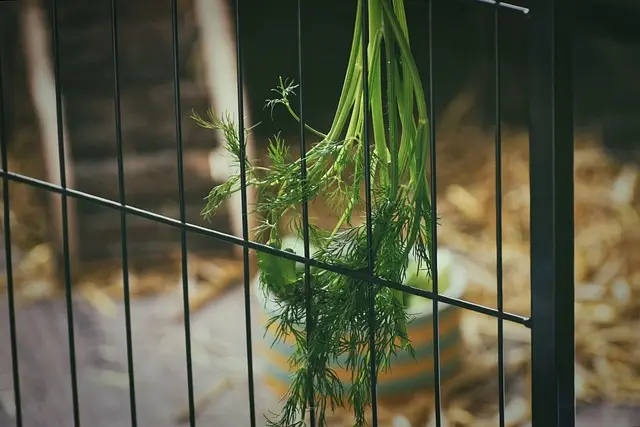Kratom, sourced from the Mitragyna speciosa tree, has historical roots in Vietnam's agriculture, prized for its health benefits. The optimal Vietnamese growing conditions produce high-quality Kratom, which has gained international attention, particularly in Hawaii where it is a regulated but legal substance since legislative amendments addressed its initial classification as a Schedule I controlled substance under the state's Emergency Rules. In Hawaii, Kratom is subject to specific sales and distribution restrictions that align with federal guidelines, balancing access for responsible users with consumer safety. Vietnam's sustainable farming practices and hand selection of mature leaves ensure high-alkaloid content, making it a sought-after product in the global market, especially in regions like Hawaii where its quality and efficacy are recognized. The state's regulatory framework for Kratom reflects an informed approach to managing its use, emphasizing public health, ongoing research, and educational initiatives, thereby highlighting Kratom's legal status and its place within holistic health practices in Hawaii.
Explore the intriguing journey of Vietnam’s Kratom leaves, a botanical curiosity gaining attention in Hawaiian circles. This article delves into the origins and cultivation practices of these leaves, set against the backdrop of their legal standing in Hawaii. Unravel the nuances of Kratom’s effects and uses, particularly as it pertains to Hawaii’s legislative framework. Join us as we navigate the complexities surrounding kratom legality in Hawaii, offering a comprehensive look at this unique plant’s path from Southeast Asia to the Pacific shores.
- Exploring the Vietnamese Origins of Kratom Leaves and Their Legal Status in Hawaii
- The Cultivation and Harvesting Process of Vietnam's Kratom Leaves
- Understanding the Effects and Uses of Kratom from Vietnam, with a Focus on Its Legal Use in Hawaii
Exploring the Vietnamese Origins of Kratom Leaves and Their Legal Status in Hawaii

In the rich agricultural landscape of Vietnam, Kratom leaves have a storied history deeply rooted in traditional practices. These leaves, sourced from the Mitragyna speciosa tree, have been used by locals for their various health benefits and energy-boosting properties. The Vietnamese regions where Kratom thrives are characterized by their fertile soil and optimal climate conditions, which contribute to the quality of the leaves produced. As these leaves make their way beyond Vietnam’s borders, they have found a significant market in places like Hawaii, where the legality of Kratom has been subject to ongoing discussions and regulatory changes. The legal status of Kratom in Hawaii has seen shifts; it was once classified as a Schedule I controlled substance under the state’s Emergency Rules. However, after intense debate and consideration from both health advocates and the kratom community, the regulation was amended. As of the knowledge cutoff date, Kratom is legal in Hawaii, with restrictions on its sale and distribution to align with federal guidelines, ensuring consumer safety while maintaining access for those who use it responsibly. This legislative balance reflects a nuanced understanding of the complexities surrounding Kratom, allowing individuals in Hawaii to purchase and consume Kratom leaves, provided they comply with the established regulations. The journey of the Vietnamese Kratom leaves from their origins to becoming a legal substance in Hawaii is a testament to the global interest in this plant and the dynamic nature of drug policy.
The Cultivation and Harvesting Process of Vietnam's Kratom Leaves

In the rich and verdant landscapes of Vietnam, the cultivation of Kratom (Mitragyna speciosa) leaves has gained attention both locally and internationally. The process begins with selecting suitable areas for plantation, where the trees can thrive in conditions that offer a balance of ample sunlight, humidity, and well-drained soil. Vietnam’s unique climate, characterized by warm temperatures and frequent rainfall, creates an ideal environment for the Kratom plants to flourish. Farmers in Vietnam follow sustainable agricultural practices to ensure the health of their Kratom crops. This includes pruning and maintaining the trees’ height to facilitate easier harvesting without compromising yield or quality.
The harvesting of Kratom leaves in Vietnam is typically performed by hand, a practice that allows for selective picking based on maturity and quality. Workers carefully pluck the mature leaves, which are known for their higher alkaloid content, particularly mitragynine and 7-hydroxymitragynine, the compounds responsible for Kratom’s effects. The leaves are then dried under controlled conditions to preserve their potency and prevent spoilage. This meticulous process is crucial for producing high-quality Kratom, which has garnered interest in regions like Hawaii where the use of Kratom is legal. In fact, the regulations in Hawaii regarding Kratom have led to an increase in demand for Vietnamese Kratom due to its reputation for quality and efficacy, making Vietnam a significant supplier in the global market.
Understanding the Effects and Uses of Kratom from Vietnam, with a Focus on Its Legal Use in Hawaii

Kratom, a plant native to Southeast Asia, has garnered attention for its various effects and potential uses. The leaves of the kratom tree, Mitragyna speciosa, contain alkaloids that can influence the body in diverse ways, depending on the dosage and strain. Vietnam, being one of the regions where kratom thrives, produces a type of kratom that is sought after for its unique properties. In Hawaii, the legal status of kratom has been a topic of discussion and regulation. As of recent updates, kratom remains legal in Hawaii, with specific regulations guiding its sale and use to ensure consumer safety. The state’s legislature has carefully considered the implications of kratom consumption, balancing anecdotal reports of its benefits with the need for oversight and responsible use. In Hawaii, kratom is often found in health stores, online marketplaces, and specialty shops, where it is used by individuals seeking its stimulant or relaxant effects. The local community’s approach to kratom reflects a nuanced understanding of both the potential benefits and the importance of regulatory frameworks to safeguard public health. This legal status in Hawaii allows for research and education on kratom, contributing to a more informed discourse on its role as a natural supplement within holistic health practices.
In conclusion, the rich heritage of Vietnamese Kratom leaves has found a unique place within the diverse tapestry of Hawaii’s wellness practices, where its status as a legal entity underpins its growing popularity. The meticulous cultivation and harvesting methods employed in Vietnam ensure that these leaves offer a potent natural resource with various effects and applications, which are legally utilized across Hawaii. As this article has explored, the intricate details of Kratom’s origins, cultivation, and legal standing provide valuable insights into its role as both a traditional herbal remedy and a subject of contemporary interest in Hawaii. With ongoing research and regulation, the potential benefits and uses of Vietnam’s Kratom leaves continue to be understood and appreciated within the context of Hawaii’s legal framework, underscoring the importance of responsible consumption and clear guidelines for its use.






